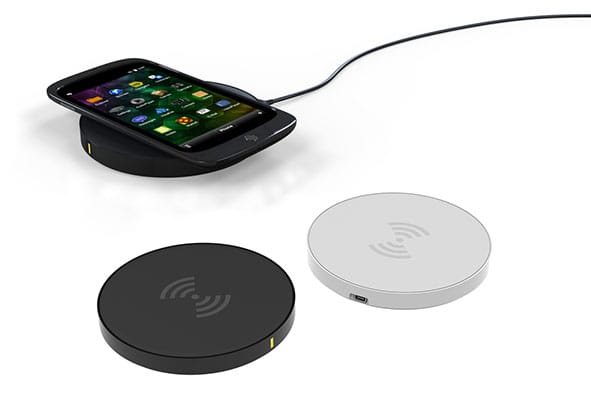Blog
Spotlight On Wireless Charging
Some new smartphones and their accompanying accessories now enjoy built-in wireless charging. But what is wireless charging and how does it work?
Well, those of us with electric toothbrushes will be familiar with the basic principle. When a toothbrush needs charging, you don’t connect a power lead to the actual brush. Instead, you pop the brush into a receptacle of some kind that’s already connected to the power source and it begins to charge.
It’s a similar process with a mobile. Find a place for your charging device on your desk at work or in a convenient location at home, plug it in and, when you need topping up, pop your phone on the charging pad or tray. Both the smartphone and the charging device contain electromagnetic coils. When the coils come close enough, a charge emits from the transmitting pad to the receiving phone.
The wireless charging technology is starting to appear in the high street. The Telegraph reports that wireless charging pads are already installed at some 50 McDonald’s in the UK and at a number of Starbucks cafes.
Pretty straightforward so far, but here’s the complication. Three different consortia are striving to get their solutions accepted as the wireless charging standard. These are:
- Wireless Power Consortium. This consortia, which comprises of several hundred of companies, including giants like Microsoft, Samsung, Sony and Nokia, supports the Qi standard.
- Power Matters Alliance, which supports Powermat. Qi and Powermat both use magnetic induction (similar to the toothbrush example above).
- Alliance for Wireless Power. Something of a wildcard and commonly seen as the underdog. The technology here is called Rezence, based on magnetic resonance, which, because of the creation of a larger magnetic field, tolerates greater distance between the coils.
‘Choosing between Qi and Powermat is simple if your current device only works with one or the other,’ says Android Central, ‘but recently we’ve seen Android phones made by different manufacturers that support both. Though Samsung has baked both technologies into the Galaxy S6 line, for now all of the other devices make you choose one or the other. Neither standard plays well with one another, which means a Qi charger won’t charge a Powermat device and vice versa.’
Qi has been around for some time, and Wireless Power Consortium has been pretty canny about ensuring there are lots of attractive accessories available. On the other hand, Power Matters Alliance has got its tech out into public places, striking deals with the likes of Delta Airlines and Starbucks.
While the jury’s out on who’s going to win this battle – and probably will be for some time – Arcadia is following the technology closely, and whichever way it ends up swinging, we’ll be there to bring you the latest promotional wireless charging gadgets as soon as they’re available.
For more in-depth information about wireless charging, visit Android Central.
Make Memorable Merchandise
[mailmunch-form id=”172197″]
Having worked in Promotional Merchandise for the last 25 years I have been exposed to all aspects of the industry. Starting out as an account manager working with some of the worlds leading brands, I have learnt to understand the needs of a client, manufacturing processes, and what it takes to deliver a successful promotional campaign that is on brand, on time and within a given budget.

